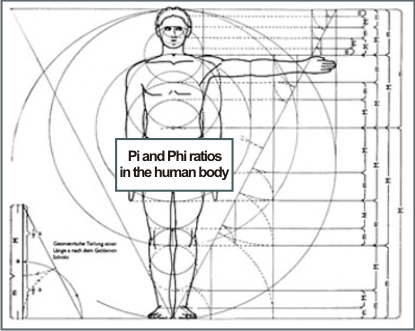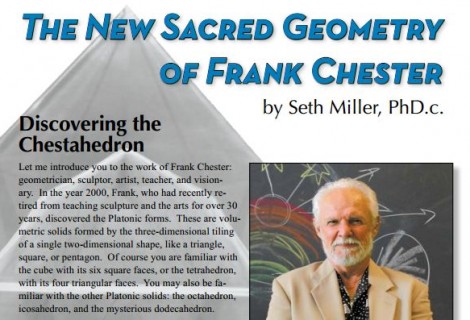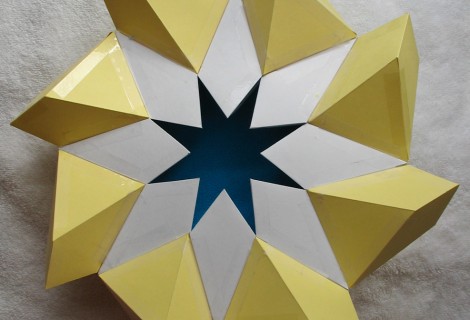A little presentation on the Golden Mean / Phi — for fun!!!
A golden section is a geometric form constructed in a particular ratio of 1:1.618… (it’s an irrational number that goes on forever without repeating… I like the idea that the golden ratio is irrational). Technically, the golden section is defined as the relation between two sections (a short and a long) on a line which divide the line in a homonic relation. The relation between the short and long section is the same as the relation between the long section and the whole line:
The simplest construction is a rectangle. You are familiar with golden-ratio rectangles in the form of your credit cards:
Incidentally you can make your own golden section ratio device to discover how saturated the world is with these ratios or to follow along by using it with the images in this post. It’s easy! Just follow these instructions:
Golden rectangles nest perfectly because of the ratio:
You also have a golden spiral which is embedded in the nesting rectangles:
This same spiral can be found with golden triangles too:
It’s known as a logarithmic spiral:
And it relates to the pentagon/pentagram:
The pentagram is built entirely of golden sections:
The logarithmic spiral is an extremely efficient shape for biological growth, and is thus found all over the natural world, specifically in biology:
But is also found in non-living things, like galaxies:
Closest to home, however, it is found over and over in the human body. In fact, as far as I am aware, the human body has more golden ratios than any other biological organism:
Our good friend Leonardo concurs:
So does his pal Michelangelo:
But here’s something more to chew on:
If you start to MEASURE these ratios, you find that they have an interesting pattern:
The next number in the sequence that leads to the golden ratio ends up being equal to the sum of the previous two numbers:
This is called the Fibonacci sequence, after, um…
Yeah, that guy.
BONUS: I bet he would have been able to figure out the following conundrum:



![creditcard[1]](https://spiritalchemy.com/wp-content/uploads/2010/01/creditcard1.gif)
![goldenmeangauge[1]](https://spiritalchemy.com/wp-content/uploads/2010/01/goldenmeangauge1-227x300.jpg)
![golden-rectangle-ratio[1]](https://spiritalchemy.com/wp-content/uploads/2010/01/golden-rectangle-ratio1.jpg)
![Fibonacci_spiral[1]](https://spiritalchemy.com/wp-content/uploads/2010/01/Fibonacci_spiral1.jpg)
![golden_triangle_log_spiral[1]](https://spiritalchemy.com/wp-content/uploads/2010/01/golden_triangle_log_spiral1.gif)
![soh-golden-triangle-and-fibonacci-spiral-edited-profile1[1]](https://spiritalchemy.com/wp-content/uploads/2010/01/soh-golden-triangle-and-fibonacci-spiral-edited-profile11.png)
![Pentagon[1]](https://spiritalchemy.com/wp-content/uploads/2010/01/Pentagon1.jpg)
![pentagram_phi_proportions[1]](https://spiritalchemy.com/wp-content/uploads/2010/01/pentagram_phi_proportions1-300x285.gif)
![694780262_8874b4f225[1]](https://spiritalchemy.com/wp-content/uploads/2010/01/694780262_8874b4f2251.jpg)
![12[1]](https://spiritalchemy.com/wp-content/uploads/2010/01/121.jpg)
![fibonacciplant[1]](https://spiritalchemy.com/wp-content/uploads/2010/01/fibonacciplant1.jpg)
![fibonacci-romanesco-cauliflower[1]](https://spiritalchemy.com/wp-content/uploads/2010/01/fibonacci-romanesco-cauliflower1.jpg)
![fibonnaciWhirlpoolGalaxyStarbirth-rot[1]](https://spiritalchemy.com/wp-content/uploads/2010/01/fibonnaciWhirlpoolGalaxyStarbirth-rot1.jpg)

![image023[1]](https://spiritalchemy.com/wp-content/uploads/2010/01/image0231-300x289.jpg)
![fibonacci1[1]](https://spiritalchemy.com/wp-content/uploads/2010/01/fibonacci11.jpg)
![Proportioner_20Da_20VInci_20mand_20med_20maal[1]](https://spiritalchemy.com/wp-content/uploads/2010/01/Proportioner_20Da_20VInci_20mand_20med_20maal1-298x300.jpg)
![David[1]](https://spiritalchemy.com/wp-content/uploads/2010/01/David1.jpg)
![PhiTeeth[1]](https://spiritalchemy.com/wp-content/uploads/2010/01/PhiTeeth1.jpg)
![270px-FibonacciBlocks.svg[1]](https://spiritalchemy.com/wp-content/uploads/2010/01/270px-FibonacciBlocks.svg1_.png)
![fibonacci[1]](https://spiritalchemy.com/wp-content/uploads/2010/01/fibonacci1.jpg)
![Fibonacci[2]](https://spiritalchemy.com/wp-content/uploads/2010/01/Fibonacci2.jpg)
![9697_Fibonacci[1]](https://spiritalchemy.com/wp-content/uploads/2010/01/9697_Fibonacci1.jpg)
![26d1113090703-triangle-paradox-missing[1]](https://spiritalchemy.com/wp-content/uploads/2010/01/26d1113090703-triangle-paradox-missing1-300x282.jpg)




It's interesting that Plato call's Phi the key to the universe, but if that is true, it has to have it's origin, it's pattern, in the spiritual world. Personally I believe that the lock for the key are the Fibonacci relation, and the trianle with the spiral is the door.
Greetings, Kim
Hi there, I would like to thank you very much for your very enlightening post on the Golden Mean. I was looking for some meaningful information about the Pentagram in particular and I came across your version.
I am trying to illustrate the 8 years cycle of Venus.
I am subscribing to your blog, regards, Paola Emma
To those stumped by the tangram puzzle, first guess the area of the entire first arrangement, and then determine it by adding the areas of the pieces. You should find a discrepancy of half a square.
The first arrangement gives the illusion of the shape of a triangle, when in fact the slopes of the two triangular pieces are unequal and create a concave vertex where they touch.
Thankyou x